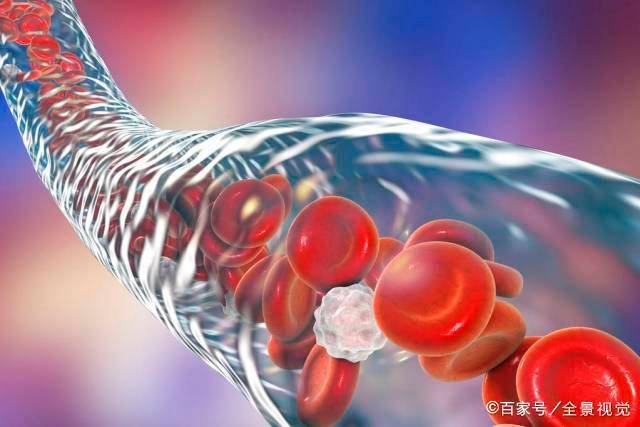Hyperlipidemia is an abnormality in fat metabolism inside the body, generally a chronic vascular disease where the amount and quality of lipids in the blood plasma are abnormal. Hyperlipidemia is one of the “culprits” of cardiovascular and cerebrovascular diseases.
When the body shows clear symptoms, it may already have severely exceeded lipid levels. Although this process is usually asymptomatic and the treatment is slow, we still need to be cautious.
When there is elevated blood lipids in the body, your legs may be the first to send you signals. Especially if you experience the following abnormalities, it indicates that your blood lipids have exceeded the normal range, and it is recommended to self-check.
High Blood Lipids: Legs Know First? If you experience 5 abnormalities, it implies that your blood lipids have exceeded normal levels and you should self-check.
1: Numbness in the legs
When one side of the body experiences numbness, weakness, etc., it is crucial to be vigilant. When a thrombus blocks one side of the body, often there is a sensation of numbness in the leg of that side. It is recommended to seek medical attention promptly for examination.
2: Leg cramps
There are many reasons for leg cramps, such as calcium deficiency or blockage in blood vessels. If your legs frequently cramp due to low physical activity and calcium supplementation doesn’t relieve the cramps, it could indicate blockage in the blood vessels.
3: Leg pain
When you experience leg pain, the skin temperature may decrease gradually, and swelling and discoloration may occur. It is essential to seek immediate medical examination as it is mostly caused by vascular blockages.
4: Limping while walking
If you experience pain, swelling, numbness after walking for an extended period, or need significant rest to alleviate the discomfort – known as intermittent claudication, it could indicate obstruction in the lower limb arteries. Increased vigilance is necessary in such cases.
5: Cold feet
It is advisable to check the warmth of your legs, especially the midpoint of the foot dorsum where you can gently feel the pulse. If you can perceive the pulse, it indicates unobstructed arterial blood flow to your feet, suggesting healthy blood vessels with minimal blockages.
For individuals with elevated blood lipids, eggs can be consumed, but refrain from the following types of foods:
When blood lipids are high, most people avoid consuming eggs, fearing that they might increase cholesterol levels and the risk of vascular blockages. However, individuals with high blood lipids can eat eggs in moderation as they provide essential nutrients required by the body.
For example, proteins, amino acids, etc. Prolonged avoidance of eggs can result in nutrient deficiencies, negatively impacting health. Therefore, moderate egg consumption is acceptable, and the following types of foods should be avoided:
Food 1: High cholesterol foods like chicken liver, fish roe
Excessive intake of high cholesterol foods like chicken liver, fish roe can lead to lipid metabolism abnormalities, elevating cholesterol, triglycerides, leading to plaque formation, atherosclerosis, fatty liver, and other complications. Therefore, controlling the intake of high cholesterol foods is crucial.
Food 2: High-fat foods such as fatty meat, lard
Consuming excessive high-fat foods like fatty meat, lard can deposit on the blood vessel walls, increasing blood viscosity and triglyceride levels. Hence, controlling saturated fat intake and supplementing unsaturated fatty acids moderately is essential.
Food 3: High-salt foods like bacon, sauces
Excessive intake of high-salt foods like bacon, sauces can cause kidney damage and induce hypertension. Hypertension is not an isolated condition and is often associated with severe heart damage. Hence, it is crucial to control salt intake, not exceeding 6 grams daily, to maintain healthy blood vessels.
Maintain stable blood lipids, remember “Two adds, Two abstinences”:
“Two adds”:
1. Drink more water
Water is the body’s best detoxifying agent, diluting blood concentration, protecting vascular health, and preventing thrombosis. Drinking a glass of warm water after brushing your teeth and washing your face in the morning can replenish the body’s required fluid, diluting the blood, and preventing increased blood concentration.
2. Exercise more
Engaging in appropriate daily exercise accelerates metabolism and facilitates the elimination of toxins, waste. Consistent aerobic exercises such as brisk walking, jogging, swimming help in speeding up blood circulation, reducing harmful residue, and maintaining vascular health.
“Two abstinences”:
1. Quit smoking
Smoking severely damages blood vessels and raises blood lipid levels. Quitting smoking directly protects the blood vessels, safeguarding the body’s health. After quitting, cholesterol levels in the blood vessels decrease, leading to softer blood vessels, maintaining healthy blood vessels, and slowly reducing blood lipids.
2. Quit drinking alcohol
The main component of alcohol, when consumed, increases the fat content in the blood, inhibits the removal of low-density lipoproteins, and protects vascular health. Moderate alcohol consumption has no adverse effects, but excessive drinking can increase bodily harm and the risk of blood clots.


